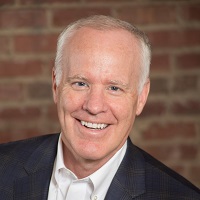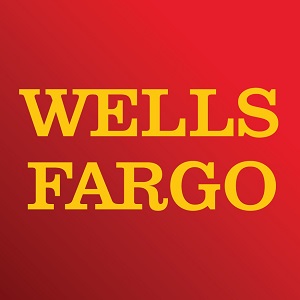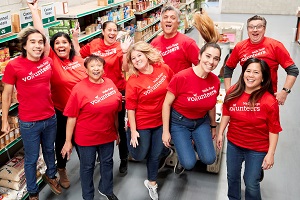 Special to the Philanthropy Journal
Special to the Philanthropy Journal
By Mike Rizer
As employers juggle the demands of incorporating artificial intelligence (AI) and technology into the “future of work,” there’s a human aspect to business success that cannot be forgotten. More and more, workers look to companies to be a force for good. Companies that involve employees in their philanthropic efforts are best poised to make the greatest difference – for their communities and their talent recruitment.
 The pressure on companies to do good is coming from within. More than two-thirds of employees surveyed in the 2019 Edelman Trust Barometer said they strongly expect any job they take to have a shared greater social purpose. Of these, over a third said they would never work for a company that does not meet those expectations. This is even more important than salary; a Cone Communications report found that nearly 75 percent of millennials would accept lower pay to work at a company whose values and social good align with their own.
The pressure on companies to do good is coming from within. More than two-thirds of employees surveyed in the 2019 Edelman Trust Barometer said they strongly expect any job they take to have a shared greater social purpose. Of these, over a third said they would never work for a company that does not meet those expectations. This is even more important than salary; a Cone Communications report found that nearly 75 percent of millennials would accept lower pay to work at a company whose values and social good align with their own.
Given that millennials are now the largest demographic in the US workforce, according to Pew, companies must seek ways to cater to their service-minded attitude, while also meeting the expectations of charitable giving from other generations. Here are three lessons we’ve learned about how to navigate this evolving landscape.
Employers must offer a mix of volunteering and charitable-giving options to appeal to people of all generations, from millennials to baby boomers.
Each generation finds a different way to create a positive change on society. There’s a natural inclination to focus on millennials, given their sizeable portion of the workforce, but employers will benefit most by thinking of a multi-generational approach to creating corporate philanthropic programs.
Millennials tend to value time over money. Seventy percent of millennials donated time to charitable causes [Forbes]. Yet, that does not mean companies should solely offer volunteering programs. Corporate giving programs – that offer options for participation – can be effective ways to engage employees of all ages; 72 percent of baby boomers give financially to charities and 59 percent of Generation X does the same [Nonprofit Source].
Senior leadership should support employee volunteering efforts from the top.
Our employees don’t just want us to write checks – they want to actively participate as members of the community. But for a corporate volunteer effort to be successful, high-level support is needed to foster a culture that encourages employee participation.
For instance, every year Deloitte hosts “Impact Day,” where nearly 25,000 Deloitte professionals volunteer on more than 1,000 projects, [Deloitte]. Giving paid time off also helps. At Wells Fargo, full-time employees receive two days of community service time each year, and we volunteer programs to engage employees in opportunities with more long-term impact. Initiatives like these led to Wells Fargo employees volunteering more than 2 million hours last year for organizations that tackle problems like economic disparity, hunger, homelessness, animal welfare, and more.
Employers should select a giving program that best suits their needs—there’s a lot more than “match” programs.
 According to a survey of 200 Fortune 1,000 companies by the Boston College Center for Corporate Citizenship, 80 percent offered a workplace giving program for employees—and 70 percent of them matched monetary contributions. But a match is just one way to give back, and companies may want to consider other options.
According to a survey of 200 Fortune 1,000 companies by the Boston College Center for Corporate Citizenship, 80 percent offered a workplace giving program for employees—and 70 percent of them matched monetary contributions. But a match is just one way to give back, and companies may want to consider other options.
After surveying our employees and researching industry best practices, Wells Fargo introduced a program called Community Care Grants, which replaces our educational matching gifts program and allows employees to direct Wells Fargo Foundation funding to support a broader range of charities than ever before when they volunteer or financially give to a charity. This allows us to recognize the volunteer activities of our employees, which includes projects in the community but also roles such as serving on a nonprofit board, and amplify these good deeds with grants. For instance, employees are able to direct a $50 Community Care Grant for the first volunteer hour they log in our tracking tool each year, and grants become larger as they volunteer more hours in the future.
But how do companies choose what kind of giving program to offer? We listened to our employees’ feedback, ultimately deciding that the employee-directed approach provided more flexibility and opportunities to give beyond just a dollar-for-dollar match. It’s a matter of weighing the pros and cons of each strategy before deciding on a program that is the right fit.
Companies want their employees to find impactful purpose in their lives, and even to extend the company’s core values and philanthropic strategy in their communities. Whether it’s helping a local housing program, offering expertise to a nonprofit, or being active in your child’s school, we want our employees to know that there is a way for them to make a real difference.
Executive Vice President, Michael (Mike) Rizer is Head of Community Relations for Wells Fargo & Company and Vice President of the Wells Fargo Foundation. In these roles, he manages the community development and philanthropy teams across the country that are responsible for community outreach, stakeholder engagement, charitable contributions and reputation risk. He has more than 25 years of experience in advancing affordable housing and neighborhood revitalization initiatives, having started his career as an attorney representing low- and moderate-income families. He is active in the community and serves on the board of Queens University and the advisory board for the University of Dayton College of Arts and Science, as well as boards of the National Center for Healthy Housing and Charlotte Leading on Opportunity.




